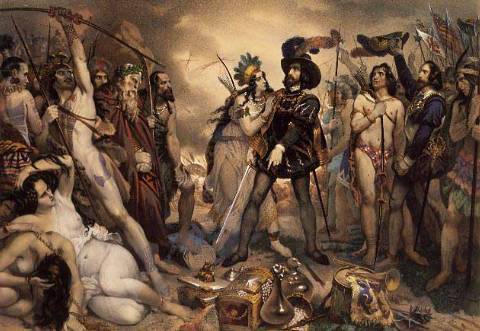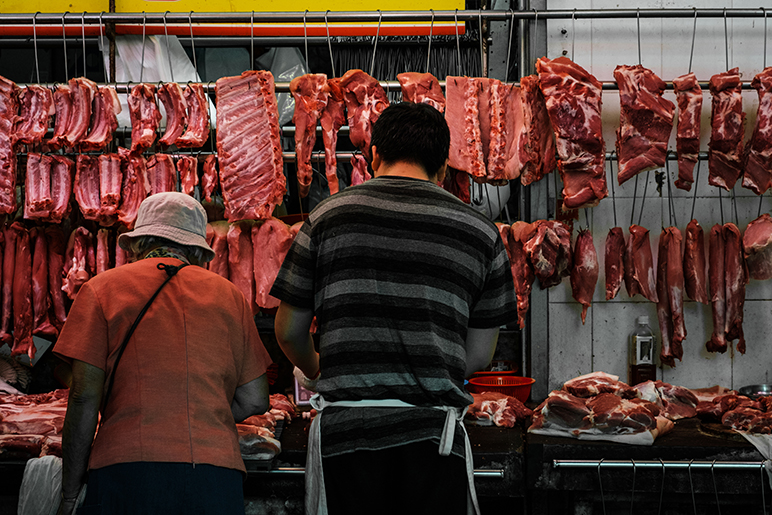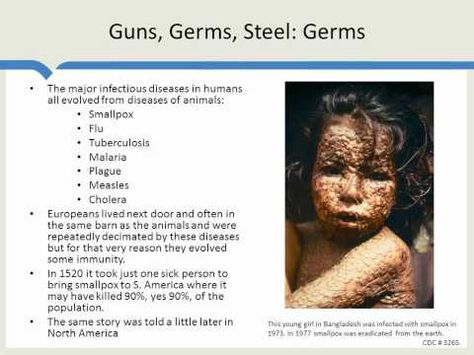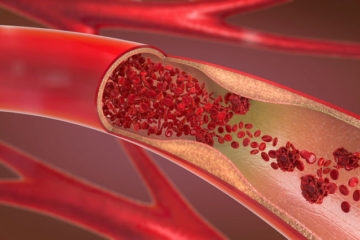New viruses entering previously unexposed human populations are a huge concern – perhaps the greatest threat to human civilization as we know it. As a nutritionist, I am concerned with eating and living in a way to provide our immune systems with the greatest advantage – over any health threat we encounter. However, a new virus, hitherto unseen on the planet, is a whole other thing compared to developing immunity against viruses that have been around for a long time. We need practical knowledge of how to avoid future pandemics.
In the natural health community, many people think that if they eat healthily and live healthily – they are protected from viral attacks. While this may be the case with ‘old viruses’ that we already have developed immunity to, it is not at all the fact with new viruses. What healthy eating and living does is improve your chronic diseases, and THAT is what lowers your risk of this particular COVID-19 Coronavirus – but not all viruses. It does improve your immune system function as well – but that may not be enough with a new (novel) virus, as we shall see.
A better understanding of how a new virus can affect even healthy people, and what it will take to stop new viruses forming, is necessary. It is not so much a matter of personal health – but of public health. We, in a democratic society have a say, and we must use it to avoid future pandemics.
Looking at history
History professor Jared Diamond’s classic book, Guns, Germs & Steel, describes an unsettling new and shocking view of history. I highly recommend it. In it, he describes how germs (ie. viruses) have been one of the major ways invading countries got the upper hand over native peoples, and therefore, their lands.

We can see how a virus can bring about the overthrow of a long-time civilization. Life as it was known changes forever. This is not science-fiction – it has happened over and over throughout history. If this is not what we want – now is the time to open our eyes and ACT.
Viruses decimate healthy Aboriginals
In Australia, 15 months after the arrival of the First Fleet in NSW, a major smallpox epidemic broke out. It was April 1789.
Smallpox affected the British colonists little as most had been exposed to the disease in infancy. The British colonists were usually living quite unhealthy lives; their diet included few fresh plant foods, cleanliness was not a priority and they drank too much alcohol. But the virus did not affect them.

On the other hand, the aboriginals who were living healthy lives close to nature – were decimated by the virus. A historian described finding many between Sydney Cove and the Heads ‘laying Dead on the Beaches and in the Caverns of Rocks’ ‘with the remains of a Small Fire on each Side of them and some Water left within their Reach’.
Up to 90% of the Aboriginal population of the Sydney area died of the disease, as they had had no previous exposure. This same outbreak may have killed 50 – 75% of those between the Hawkesbury River and Port Hacking. It also killed an unknown number at Jervis Bay and west of the Blue Mountains. No amount of healthy eating or living could help them.
In Southeast Australia, infectious and respiratory diseases were responsible for over 50% of recorded deaths in Aboriginal settlements. The major epidemic diseases included smallpox, syphilis, tuberculosis, influenza, and measles.
Viruses in the New World
In case anyone should think the Australian aborigines were more susceptible than anyone else to new viruses, let’s compare the American Indians at the time of early British contact.
Before English contact, the American Indians were eating diets based on maize (corn), beans, vegetables and freshly caught game and fish. They were active and healthy. But even before the English settlers established the Plymouth colony (1616–1619), many Native Americans living on the southeastern coast of present-day Massachusetts died from a mysterious disease that included jaundice and bleeding from the nose. Many explanations have been made for this, but the most likely one is leptospirosis – carried by rats from European ships.
Up to 90% of native Americans were wiped out in some areas by the plagues of Europeans. Yet native American plagues did not wipe out Europeans – because there were none – for reasons which appear below.
Smallpox amongst native Americans
30% of the West Coast Native Americans were killed by smallpox during the 1770s. Between 1780 and 1782, smallpox brought devastation and drastic depopulation among the Plains Indians. By 1832, the United States federal government rolled out a smallpox vaccination program for Native Americans.

Notably, 70% of West Coast Native Americans did NOT die of smallpox (although many were disfigured by it in life). There was a large degree of immunity with smallpox, much the same as there is with COVID-19; more people are contracting it and living than are contracting it and dying. (However, even those who live appear to have lung scarring; time will tell if this heals or places them at risk of further respiratory disease in the future.)
Comparison with COVID-19
When 30% of a population dies, civilization as it was, halts – both for the duration of the epidemic – and thereafter. This is a high percentage which means society does not continue as previously, or for a long time afterward. It also means that society is more vulnerable to takeover by those immune to the virus – as history shows again and again.
To compare, with COVID-19 we are seeing only a 3.4% death rate (over 70s is 15%; under 40 is 0.2%). Our societies have changed for the isolation period – but basic utilities and food supply are still functioning – and can continue to do so with the low 3.4% death rate.

Were the death rate 30%, (as with smallpox in those healthy but previously unexposed populations), many doctors would not be working. Grocery shelves would likely be bare, garbage collection would cease, and bodies may lie temporarily unburied in the streets. This is what we desperately hope to avoid with an epidemic.
And this is why we cannot depend on just “staying healthy ourselves”. This is not enough for us or for our society to function as new viruses arise faster and faster. As they are now doing. We need a plan to avoid future pandemics.
What causes viruses?
Viral pandemics have all been started by animals, caged together, which incubated viruses they already had, into a form transmittable to humans who were now living in close proximity to them.
It is estimated that the domestication of animals began about 10, 000 years ago. With it came viruses from those animals.

Viruses can spread more easily if animals in markets or on farms are sick or kept in dirty, cramped conditions, such as in stacked cages. When animals are under stress, viral pathogens can intermingle, swap bits of their genetic code, and mutate in ways that make them more transmissible between species.
Meat is now largely produced in confinement operations with animals crowded in unsanitary conditions – the perfect breeding grounds for new viruses. This is how epidemics begin. We can avoid future pandemics by considering how we are interacting with animals.
Which animals caused which diseases?
- Measles – rinderpest virus (Ancient Egypt) from cows and sheep – has killed 200 million people over last 150 years
- Smallpox – camelpox from camels
- Whooping cough/pertussis – from domesticated pigs
- Typhoid fever – chickens
- Tuberculosis – bison, elk & deer – into domesticated cattle
- Common cold – horses
- Leprosy – from domesticated water buffalo
- Spanish influenza (1918) from ducks. All cases of the flu each year are variants of this original Spanish flu; it keeps changing and killing frail and immune-compromised people around the world every year by the millions.
- Asian Flu – (1957) – the Spanish flu reappearing in another more virulent form
- Hong Kong flu – (1968) – the Spanish flu reappearing again as a new dangerous variant
- HIV (1959) – from chimps. Workers gathered and ate them while deforesting central Africa for new farmland. AIDs (USA-1981) has now killed 25 million people worldwide.
- Ebola (1976) – bats or non-human primates (chimps, apes, monkeys)
- Creutzfeld-Jakob disease (variant) (1996) – from cattle, sheep and deer
- Swine Flu (1998) – flu from birds & humans – into pigs – to a more dangerous variant form – then back to humans
- SARS coronavirus (2003) – bats, through civet cats
- MERS coronavirus (2012) – bats, bridged to humans through camels
- COVID-19 coronavirus (2019-20). Suspected to be the eating of bats.
In the case of respiratory diseases, such as COVID-19, the virus can jump to food handlers or customers through exposure to an animal’s body fluids.
By the mid-1900s, many infectious diseases appeared to have been eradicated or at least controlled. The cause of this was better sanitation, nutrition and vaccinations. By 1970s, a whole new range of infectious diseases was entering the human population at unprecedented rates up to today. 30 new diseases in 30 years.
We have moved into a whole new era of disease – all of which come from animals.
What conditions cause deadly viruses?

As long as people are consuming meat, eggs or dairy, there will be domesticated animals to feed them. Confinement operations are only way to feed large populations with the meat they demand.
For most of history, food animals lived on small family farms. They grazed outside most of the year without crowding. This is likely why infectious diseases, although common, did not develop a lot of new variants as they do now. This meant a degree of immunity could be established after the first wave.
Today, people are eating about 20kg more meat per year than 60 years ago. This has brought the need for factory farming to supply enough meat for populations and keep the costs down.
With factory farming now part of modern food production, these huge flocks and herds of animals, crowded in often unsanitary conditions and fed unnatural foods – are in effect – virus-forming laboratories. Viruses quickly jump from one stressed or sick animal to another, changing their DNA gradually to a variant that kills humans.
There’s no social distancing in the feedlot or modern chicken farm.
The unsanitary conditions of the modern slaughterhouse further spread the disease. In a short time, it is in the human population, reaping havoc. This scenario makes it impossible to avoid future pandemics.

Factory farming and unregulated animal markets (wet markets) with wild animals appear to cause new and threatening viruses.
This is why native American and Aboriginal diseases did not decimate the invading Europeans – because there were none! These native populations did not have closely quartered domestic animals. Therefore they did not appear to have viruses – so had nothing to pass on to the invaders.
Viral control methods
Keeping these new viruses in check depends on infection control strategies—like
- washing hands
- social distancing
- quarantines
- hygiene
- while scientists work to develop vaccines.
However, a MERS vaccine never materialized despite widespread efforts. As of today, no specific treatment exists for SARS or MERS coronaviruses, and the normal flu vaccines actually slightly increases the risk of being harmed by coronaviruses, according to <one large study>. Some viruses, like MERS, and it appears, COVID-19, are most severe in older patients and in those with pre-existing chronic conditions. Others, like SARS are just as likely to kill healthy younger people, aged around 40.
Vaccines and containment are vital – but even more so – is stopping the cause.
Viruses never leave
Now this COVID-19 Coronavirus has entered the human population, it’s never going to leave. It will be like influenza – picking people off very year.
We hope to acquire immunity over time – becoming stronger because we’ve had it, and herd immunity stopping it taking off in the community again. But as it gets into populations of closely bunched and already chronically ill animals, its DNA can change and easily produce a more virulent strain which we are NOT immune to.
We have to keep in the forefront of our minds that, with the trade of animals, a new viral threat is always nearby.
Steps to avoid future pandemics
- Get your chronic diseases under control. COVID-19 is a respecter of persons – those with no chronic diseases (underlying conditions) survive in almost all cases. Not all infectious diseases are like this.
- Vote to eliminate factory farming – by refusing to buy meat or eggs from such farms.
- Go largely or completely plant-based. This will not protect you from COVID-19. But if we can outlaw the sale of animals from factory farms and unsanitary wild-animal wet markets with lowered demand, we can, most likely, protect our world.
It is people’s habits that are driving the large trade of animals.
Pandemic influenza is now the biggest risk to civilisation. We can, however, do something about it.
Try some of my easy plant-based meals and start the transition away from an animal-based diet. Download from the popup form on this page. (Refresh the page if it has disappeared).
If you have a chronic disease, now is a very good time to book a FaceTime appointment to start improving it. This may lower your risk of ending up in ICU from COVID-19 – if not this year, then when the virus returns. <Book here>.



0 Comments